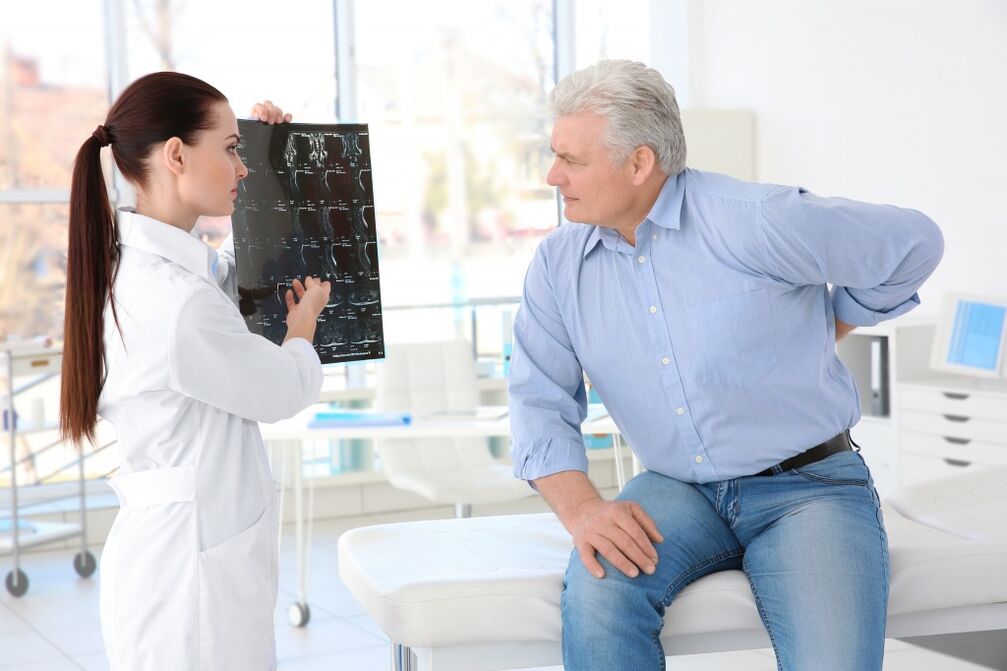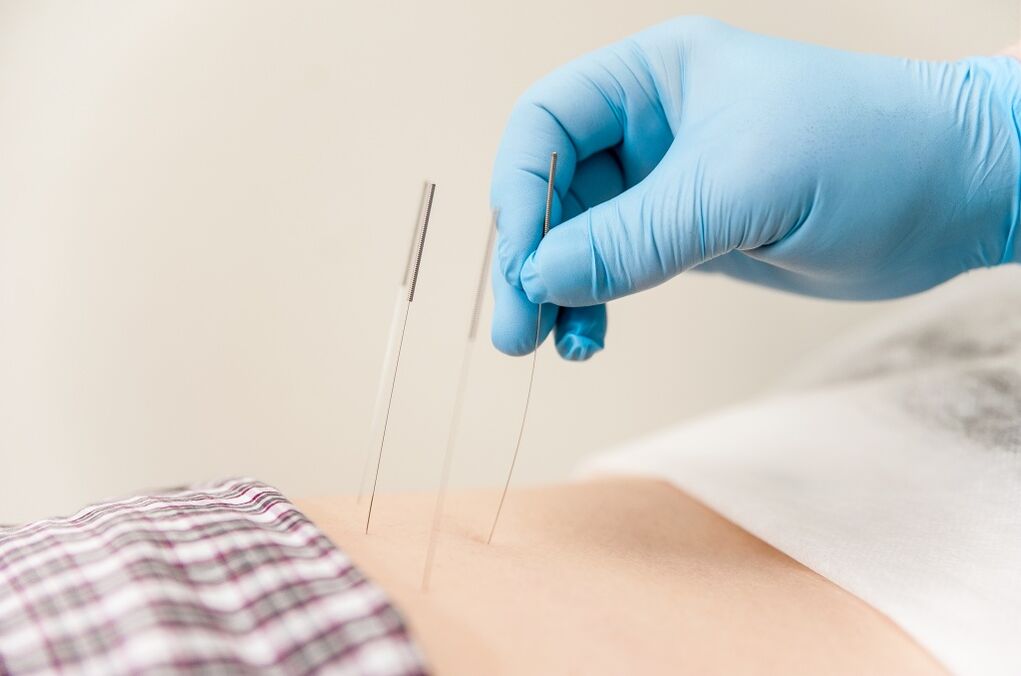Osteochondrosis is called Destroveko-Deepth disease of the cartilage tissue of the intervertebral joints, leading to their destruction.The location of the osteocondrosis in the vertebrae of the thoracic spine is called thoracic osteochondosis.Compared to the osteochondrosis of other location - the osteochondosis of the cervical or lumbar chest is less commonly diagnosed with anatomical characteristics of the chest structure.It is a relatively static structure in which the mobility of the spine itself is relatively small - respectively, even with a pathological process active in the intervertebral discs, the probability of their injury is minimal.In the recent past, when the diagnostic capabilities were limited, thoracic osteochondrosis was considered the prerogative of exclusively elderly patients.It is now identified not only in Young, but also during childhood.

Why is the thoracic osteochondosis develop?
Among the causes of the Toracic osteocondrosis, the following should be distinguished:
- pathology of the vertebrae and intervertebral discs - both hereditary and acquired following various factors;
- violations of the blood flow to the spine;
- Excessive or irrational physical activity on the spine (when playing sports or due to hard physical work);
- violations of the mineral metabolism in the body, lack of some trace elements;
- sedentary lifestyle, sedentary professional activity;
- Weakness of the rear muscles, which caused an improper posture and an irrational distribution of the load on the spine;
- injuries.
In addition, there are a series of factors that can cause an exacerbation of the disease in its chronic course:
- accident;
- stress, excessive nervous tension;
- Hypothermia of the body - both general and local hypothermia of the back muscles;
- Physical overwork.
Why is thoracic osteochondosis dangerous?
The osteochondrosis of the thoracic spine is a disease, accompanied by significant pathological changes in the intervertebral vertebrae and joints.Consequently, the first consequence of this disease is the destruction of structures that form the spine.The result of this can be scoliosis, the pathology of the respiratory system (pneumonia, pneumonerosis), compromised blood circulation of internal organs, diseases of the upper gastrointestinal tract (pancreatitis, cholecystitis).The negative consequences of the thoracic osteocondrosis can also apply to the lesson system.Persistent pain syndrome, characteristic of osteocondrosis, reduces the quality of life and can "mask" for other diseases, which causes diagnosis and improper treatments.
How does the thoracic osteochondrosis manifest itself?
With thoracic osteochondrosis, the symptoms are quite characteristic:
- Pain - It occurs when a person is in a position for a long time, as well as with movements, weight lifting, physical effort.The boring constant pain in the scapula area is characteristic, as well as pain when trying to raise your hands;
- Intercostal neuralgia;
- Felt in the chest, as a result of which deep breathing becomes difficult;
- Decrease in sensitivity some areas of the skin;
- Wall - a feeling of "creeping gemmebumps" on the skin, burning, tingling;
- decrease in temperature some areas on the skin;
- decrease in temperature Leg leather, Itching sensation burning in them;
- Digestive disorders.
Two basic types of pain are distinguished that accompany the osteochondosis of the thoracic column: Dorsalgiyu (prolonged pain in the affected intervertebral cartilage area) and the darsago (intense paroxysmal pain accompanied by muscle spasm and breathing difficulties).
The osteochondosis thus called so called called is characteristic of osteochondosis Gastro syndrome - Pain in the epigastria, not related to meals, at the time of the day or year.
Degree of thoracic osteochondosis
In clinical practice, 4 degrees of osteochondosis of the thoracic spine are distinguished, depending on the degree of damage to the cartilage and involvement in the pathological process of the surrounding structures.
Thoracic osteochondosis of the spine of the 1st degree: The discs between the vertebrae lose their elasticity, a little diluted, local protrusions - the protrusion may appear in the fibrous rings of the discs.
Thoracic osteochondosis of the 2nd degree: The thinning of the intervertebral discs progresses, the thoracic vertebral column loses stability.At this stage, pain begins to disturb, often neurological symptoms come together: walls, numbness of the skin.Crafts may appear on the fibrous ring of the intervertebral disc.
Thoracic osteochondosis of the spine of 3 degrees corresponds to the formation of intervertebral hernia.
4 degrees thoracic osteochondrosis It is characterized by a complete loss between the vertebrate disk of its amortization properties.The lapping of the vertebrae becomes critical, the bone tissue begins to collapse.In the canals of the spine, the blood vessels and the nerves are violated, which leads to persistent neurological symptoms, intensive bolevomu syndrome, circulatory disorders.
Diagnosis of thoracic osteochondosis
The diagnosis of "thoracic osteochondrosis" is made on the basis of an investigation on the patient, on his exam and exam: X -ray and magnetic resonance imaging.A X -ray study helps to establish the location of the spinning of the spine and the magnetic resonance imaging imaging is to clarify the diagnosis, exclude the presence of benign and malignant neoplasms.
Numerous symptoms of osteochondosis of the thoracic column are not specific: the same signs can indicate other diseases.This explains quite frequent errors in diagnosis, when the patient, for example, is treated for a long time for pancreatitis because of pain, whose real cause is osteochondosis in the breast.Therefore, complete diagnostics, attracting adjacent specialists - gastroenterologists, pulmonologists - for further patient exams are very important.
Thoracic osteochondrosis: treatment

Given the fact that the restoration of the destroyed cartilage is impossible, the effective treatment of the mammary osteochondrosis is possible only in the initial stages of the disease, until the cartilage has yet lost the structure.Therefore, it is particularly important to consult a doctor in a timely manner: when the first manifestations of pathology appeared, discomfort in the back, insignificant pain, numbness of the skin areas or its burning sensation.
In the early stages of the disease, the treatment is reduced to the intake of non -narcotic analgesics, allowing pain and non -steering anti -inflammatory drugs that reduce the intensity of the inflammatory process in the tissues and also eliminate pain.However, the main emphasis in the treatment of the initial phase of the osteocondrosis of the thoracic spine is made to receive the OrchestraTekTorov.This is the name of a group of drugs intended to restore normal metabolism in the cartilage tissue, which involves an improvement in cartilage trophism and a slowdown in its destruction.
With the progression of the pathological process of the anti -inflammatory agents nonsteric to alleviate inflammation, as a rule, it does not become enough, which forces the doctor to integrate the cortic glucose with steroid drugs.In addition, diuretics can be added to the list of medicines that allow to eliminate swelling in the roots of the violated spinal nerves and then relieve the appropriate neurological symptoms and pain.The inclusion of antispasmodic drugs in therapy allows to eliminate muscle spasm, which accompanies the osteochondosis of the thoracic column.
With the development of intervertebralnia and the destruction of the bone tissue of the vertebrae, the conservative treatment loses its effectiveness, the only reasonable alternative is the surgical treatment of osteochondosis.
Physiotherapy for osteochondosis in the breast
Outside the periods of exacerbation, physiotherapy brings good results.The effective methods in osteochondosis of the thoracic region include:
- laser therapy;
- magnetotherapy;
- Extension - both dry and wet;
- emptiness therapy;
- acupuncture;
- Farmakopunkura.
In addition, massage and manual therapy includes popular and effective physiotherapy methods for breast osteochondosis.The preventive massage courses for patients with osteochondosis of the thoracic region should be subjected to at least twice a year.At the same time, any manipulation should be as much life as possible, exclusively outside the periods of exacerbation, so as not to cause an exacerbation of the pathological process.

Physical education of media for thoracic osteochondosis
An important component of the complex treatment of the thoracic osteochondosis of the spine is therapeutic physical education (exercise therapy). The task of the exercises is to restore the mobility of the intervertebral joints, eliminate muscle spasm, eliminate rigidity in the spine.LFK allows you to strengthen muscle corset and increase the patient's physical mobility as a whole, which is an important factor in stimulating blood circulation, the restoration of lung ventilation.
Before performing a complex of special exercises, it is necessary to perform a slight general heat, aimed at heating the muscles or taking a hot shower.High quality heating before lessons avoids injuries.All movements should be fluid, it is necessary to avoid inclinations and acute curves that can aggravate the damage to the spine.
The osteochondrosis of the thoracic spine is a chronic disease that significantly reduces the quality of life of the patient, dangerous of his complications.The timely address to the doctor and the competent complex treatment, which began with the first signs of the disease, will help to stop the pathological process and eliminate the unpleasant symptoms.




































